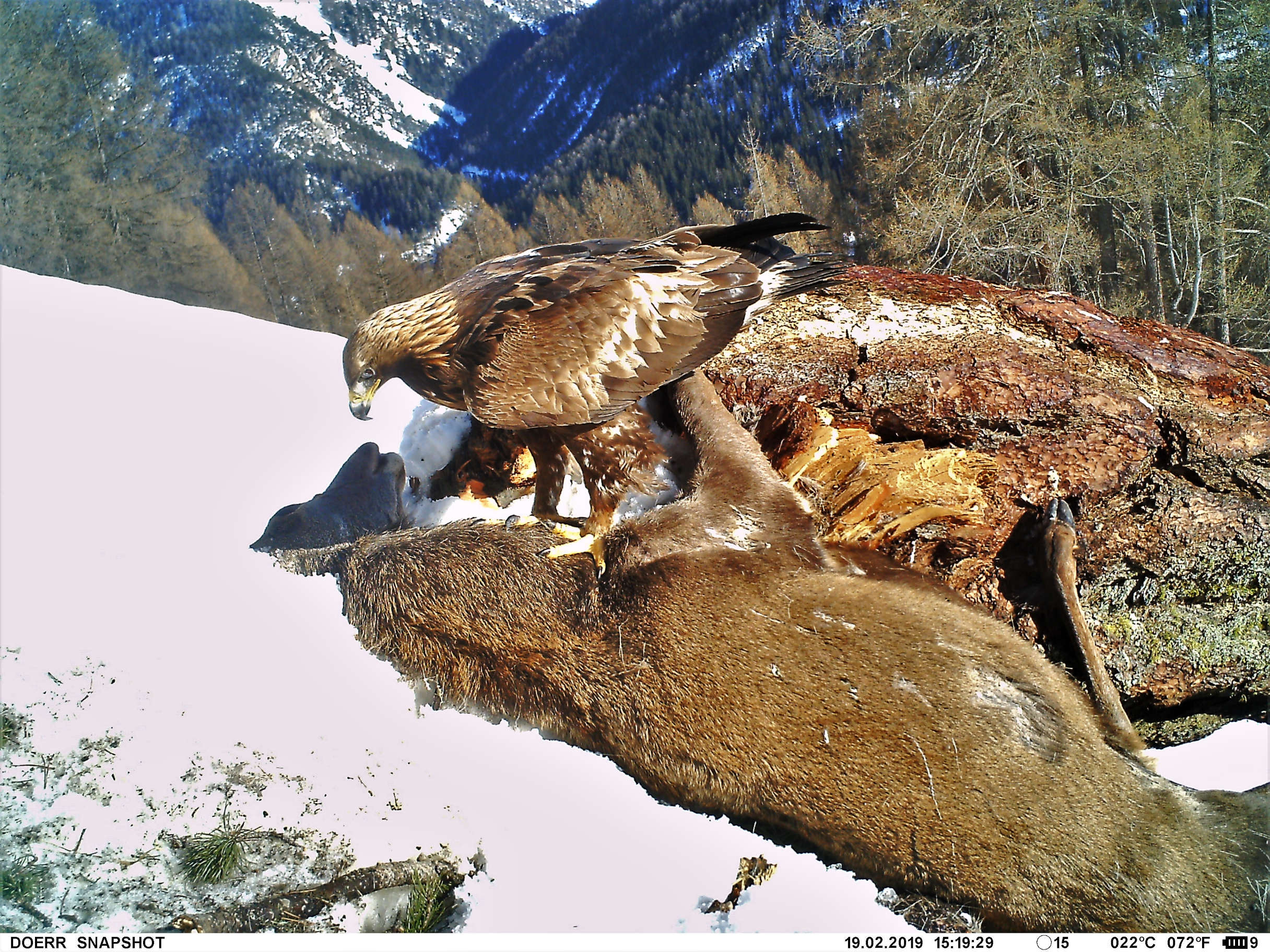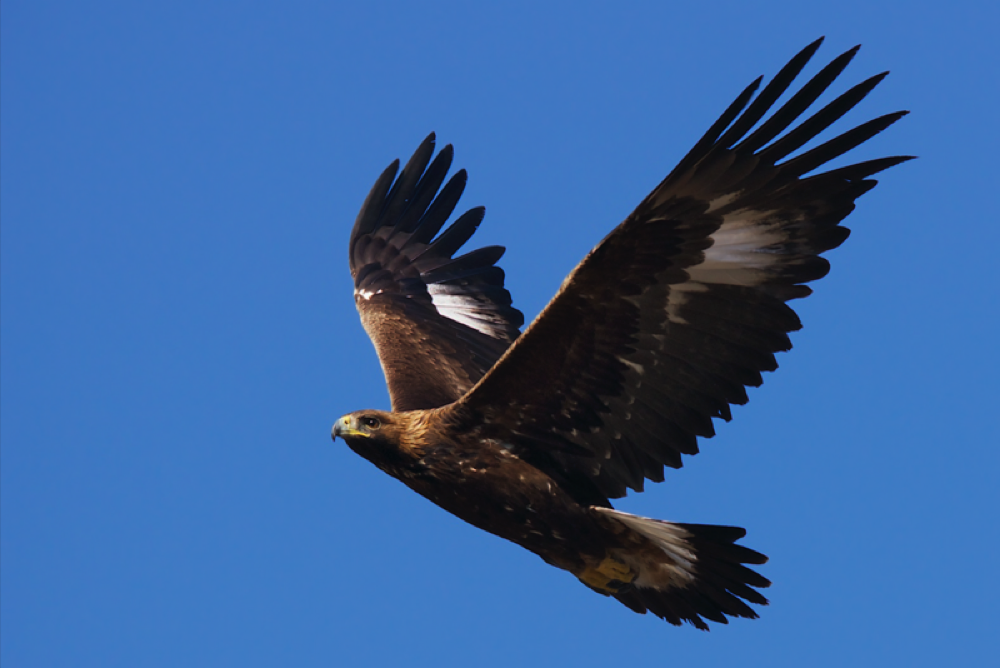Golden Eagle
Dispersal Ecology of Alpine Golden Eagles
Natal dispersal is a key factor shaping population structure and dynamics. An individual is exposed to different biotic and abiotic conditions and has to weigh costs and benefits of different movement modes and behaviours while dispersing. We aim to study this important life history stage of Alpine golden eagles (Aquila chrysaetos) by equipping juveniles with high resolution GPS and accelerometer tags.
Understanding juvenile dispersal is key to our understanding of population structure and dynamics. In large, long-lived raptors such as golden eagles (Aquila chrysaetos), juvenile dispersal lasts for up to six years. During this critical phase, individual behaviour changes substantially, with a transition from being free-roaming “floaters” (dispersive phase) to being territorial (home-ranging phase), and from scavenging to hunting. A multitude of abiotic and biotic factors affect costs and benefits of movement modes and behaviours at different spatial and temporal scales. Beyond the distribution of food, topography (thermal properties) and climate, the density of conspecifics might be an important factor shaping movement trajectories within the transient stage.
In collaboration with the Swiss Ornithological Institute and partners from the Max Planck Institute for Ornithology (Dr. Kamran Safi) and Stelvio national park, Italy (Dr. Enrico Bassi) we tag juvenile golden eagles with the newest generation of solar-powered GPS- and accelerometer-tags. In a first step, the transmitted high-resolution GPS and accelerometer data will be compared to behavioural observations to identify patterns in these data reflecting specific behaviours. In a second step we will investigate how juvenile activity, movement and feeding behaviours as well as movement modes change over time and how different abiotic and biotic drivers affect these behavioural characteristics.
The study will enhance our understanding of animal movement and dispersal from a fundamental research perspective. Beyond that, the gained results can also be relevant from an applied point of view regarding the conservation of Alpine golden eagles.
The GPS tracked birds can be followed live with the App animaltracker available for Android and iOS. Further information on the project can be found on the website of the external page Swiss Ornithological Institute.



